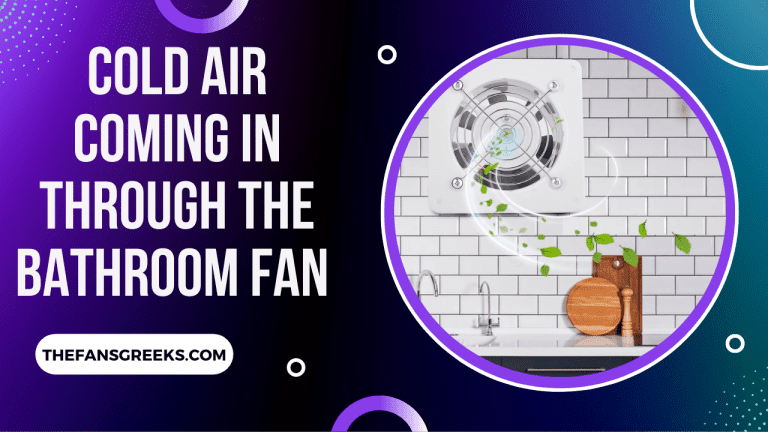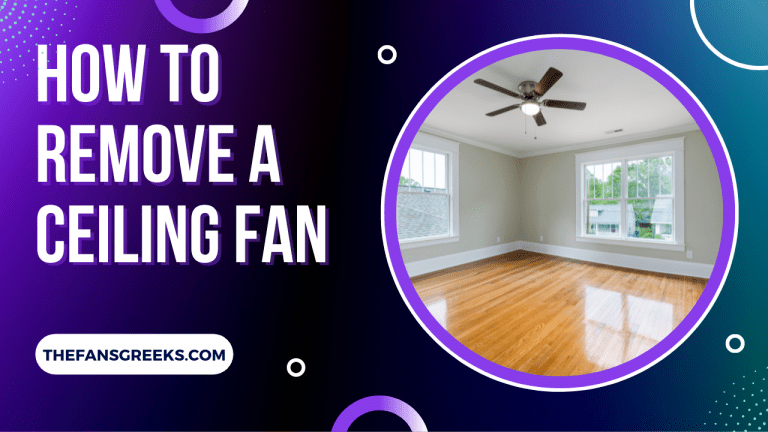Cold Air Coming in Through the Bathroom Fan [FIXED]
Having cold air blasting through your bathroom fan on a frigid night is quite annoying. For those whose bathrooms are like a freezer, that cold air might be a welcome guest on a hot summer day.
Bathroom fans can cause cold air to enter your home, making you uncomfortable, or even causing illnesses. How can we eliminate this issue and what is the root cause?
By detailing the causes and solutions to this problem, this article provides all the information you need to solve the problem of cold air coming through your bathroom exhaust fan.
Why Is Cold Air Coming Through Your Bathroom Exhaust Fan
Issues with the Backdraft Damper
Problems with the backdraft damper are the most common cause of cold air in the home. A backdraft damper prevents air from flowing in the wrong direction when installed in an HVAC system.
Occasionally, backdraft dampers are damaged or rusted by age, but they are usually poorly installed, allowing cold air to enter your home when they are open.
Issues with Exhaust Hood or Sealed Door
The exhaust from your bathroom is located on the other side of the backdraft damper. Your home’s first point of entry for cold air is also here.
Exhaust hoods come in many shapes and sizes, but yours will usually be found outside on your roof or on an exterior wall. There may be a problem with your exhaust vent that is allowing more air into your bathroom than it is meant to.
When heavy winds are blowing, you can close the doors on some exhaust vents. Your door will still have the same problems if it doesn’t seal properly.
Cold Pipes
Most homes have pipes running alongside the exhaust vent, depending on how they were built. The pipes can actually cause your exhaust vent to get cold if they become cold enough from the weather or excessive use of cold water.
The air that travels through your exhaust vent can become frigid if it gets extremely cold. Your bathroom exhaust fan cover makes it easier for cold air to seep through since cold air is denser than warm air.
How to Stop Draft From the Bathroom Extractor Fan
Repairing or Replacing a Backdraft Damper
Checking a backdraft damper is pretty straightforward. A flashlight can be used to inspect the damper after removing the exhaust fan cover. It will be necessary to replace or reinstall the damper if it is loose with significant gaps.
Both the exhaust fan cover and the fan itself must be removed to access the damper, which usually only requires a screwdriver. In order to keep the cold air out of your bathroom, you should consider installing a new double backdraft damper.
Resolving Issues with an Exhaust Hood or Sealed Door
When your outdoor exhaust vent is on a wall, inspecting it is as simple as walking outside. Your vent, however, will be accessible only via roof access if it is located on the ceiling.
A vent outside your walls is subjected to more abuse than a vent inside. Thus, it is important to inspect outdoor vents regularly to detect visible damage that needs to be repaired. It may be necessary to replace the vent completely, depending on the damage, but these vents are generally repairable.
Make sure the sealed door on your vent is working correctly by opening and closing it and checking it for any damage.
Getting Rid of Cold Pipes
A cold pipe would likely be to blame if your vent isn’t the problem. You are likely to experience a problem with the vent itself if there are no pipes running alongside it. The installation of piping along vents is very common.
You can eliminate cold pipes easily and effectively by using pipe insulation sleeves. Fitting the sleeves over your pipes is as simple as cutting them to the right size. Additional stability can be achieved by attaching plastic ties or plumbers tape.
The right insulation sleeves can help keep your bathroom warm during the winter as well as keep your pipes from bursting and keeping flowing water at the appropriate temperature.





![How to Clean NuTone Bathroom Fan [Step-by-Step Guide]](https://www.thefansgreeks.com/wp-content/uploads/2022/08/How-to-Clean-NuTone-Bathroom-Fan-768x432.png)
